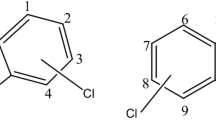Abstract
Recently, there is increasing interest in the microbial degradation of endocrine disruptors. This study was conducted to show the isolation and property of bacteria having bisphenol A (BPA) biodegradability in river water and to identify the difference of BPA degradation under aerobic and anaerobic conditions. Three river water samples spiked with BPA (1 mg/L) were rapidly degraded under aerobic conditions. The half-life for BPA degradation ranged from 2 to 3 days, and BPA was below detection limit (less than 0.005 mg/L) on the 10th day. But a decrease of BPA under anaerobic conditions was hardly identified at 30°C for 10 days (less than 10%). Also, most bacteria (10 out of 11) isolated from three river waters had BPA biodegradability, but there were differences in removal rates of BPA (18% to 91%). Moreover, two strains that had high BPA biodegradability (about 90%) were identified as a Pseudomonas sp. and a Pseudomonas putida strain.
Similar content being viewed by others
Author information
Authors and Affiliations
Additional information
Received: 14 November 2001/Accepted: 11 March 2002
Rights and permissions
About this article
Cite this article
Kang, JH., Kondo, F. Bisphenol A Degradation by Bacteria Isolated from River Water. Arch. Environ. Contam. Toxicol. 43, 0265–0269 (2002). https://doi.org/10.1007/s00244-002-1209-0
Issue Date:
DOI: https://doi.org/10.1007/s00244-002-1209-0




